Christian Askeland has recently pointed out that the Gospel of John fragment, allegedly found together with the Gospel of Jesus’ Wife papyrus, is undoubtedly a modern forgery. His assumption is based on the fact that the text of this fragment, which is written in the Lycopolitan dialect of Coptic (dialect L5, more precisely),[1] follows the edition of the only known manuscript in this idiom (yes, dialect L5 is attested only in one manuscript!), that is, British and Foreign Bible Society MS 137, published by Herbert Thompson in 1924.[2]
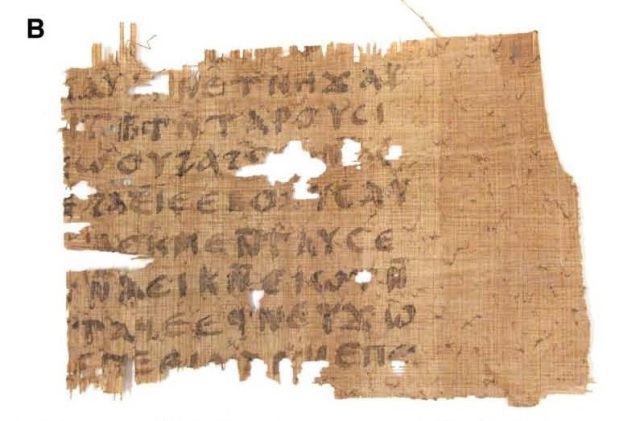 The modern forger even followed the same line breaks, although s/he constantly skipped one line in Thompson’s manuscript, wishing to engender a presumption that the fragment belonged to a codex twice the size of the original model. However, it is precisely this detail that makes the forgery plain because it is highly improbable that a manuscript could completely harmonize with its model in such a consistent manner every second line.
The modern forger even followed the same line breaks, although s/he constantly skipped one line in Thompson’s manuscript, wishing to engender a presumption that the fragment belonged to a codex twice the size of the original model. However, it is precisely this detail that makes the forgery plain because it is highly improbable that a manuscript could completely harmonize with its model in such a consistent manner every second line.
 As the John fragment and the Gospel of Jesus’ Wife papyrus stem from the same pen, it is now beyond reasonable doubt that the latter must necessarily also be a hoax. Of course, it is only the latest blow this text has received since September 2012. Numerous other red flags have been raised in between: unconvincing paleography, literary dependency upon the only surviving copy of the Gospel of Thomas in Coptic, the rocambolesque modern history of the fragment, which involves German scholars (all conveniently dead), the whole affair unfolding in a movie-like Cold War scenario.
As the John fragment and the Gospel of Jesus’ Wife papyrus stem from the same pen, it is now beyond reasonable doubt that the latter must necessarily also be a hoax. Of course, it is only the latest blow this text has received since September 2012. Numerous other red flags have been raised in between: unconvincing paleography, literary dependency upon the only surviving copy of the Gospel of Thomas in Coptic, the rocambolesque modern history of the fragment, which involves German scholars (all conveniently dead), the whole affair unfolding in a movie-like Cold War scenario.
 Given that the evidence of the forgery is now overwhelming, I consider the polemic surrounding the Gospel of Jesus’ Wife papyrus over. Personally, I am not interested from this point onwards in speculating on who the forger might be and what his/her intentions are. Also, I do not consider Karen King responsible for this affair. As scholar, she has only followed her call and edited a potentially interesting manuscript fragment. She may consider herself cheated, but nothing more. I am sure that many other scholars would have done exactly the same thing in her place.
Given that the evidence of the forgery is now overwhelming, I consider the polemic surrounding the Gospel of Jesus’ Wife papyrus over. Personally, I am not interested from this point onwards in speculating on who the forger might be and what his/her intentions are. Also, I do not consider Karen King responsible for this affair. As scholar, she has only followed her call and edited a potentially interesting manuscript fragment. She may consider herself cheated, but nothing more. I am sure that many other scholars would have done exactly the same thing in her place.
My involvement in this has always been purely academic. I have been constantly addressing the questions as researcher interested in Coptic, notably in paleography and literature. From this perspective, I suspected the forgery from the very moment I saw this fragment in September 2012 in Rome, a few minutes after Karen King introduced it to us during her presentation. Ever since, my only worry has been that the scholarship might become “infected” by such a forgery. Otherwise, I am not interested in the implications this fragment might have for contemporary Christian beliefs, had it been genuine. As I have been suspicious regarding GJW’s authenticity, I have avoided constant updates about it on this blog, although it is a place devoted primarily to Coptic literature and manuscripts.
I should also stress that I am not a scholar of early Christianity. I feel myself more comfortable with later texts, albeit they are less interesting for most people out there. I am definitely keener to spend time on a newly attested text in Coptic, which adds little but not negligible information to our knowledge of Coptic literature, than on a fragment which creates such a fuss in the media. It’s time for me (and this blog) to go back to less shocking texts.
[1] For the sigla system of Coptic dialects, see R. Kasser, “A Standard System of Sigla for Referring to the Dialects of Coptic,” Journal of Coptic Studies 1 (1990) 141-151. At p. 148, Kasser introduces the dialect L5 and the only known manuscript written in this dialect, namely the John manuscript edited by Thompson (see the following note).
[2] H. Thompson, The Gospel of John according to the Earliest Coptic Manuscript (London, 1924).









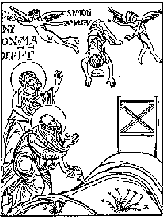




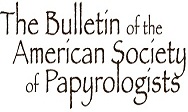
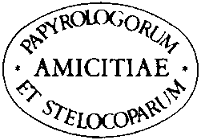
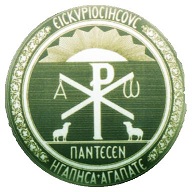





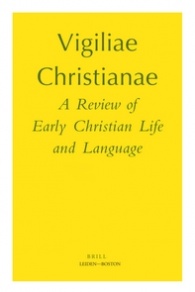






Dr Suciu, Pr Rodolphe Kasser – R. I. P. – has to add one subdialect in his classification : L5’, that is “Ebolized Lycopolitan” – where “Standard Lycopolitan L5” may be called Abalized Lycopolitan… 😉
Two days ago, I found an evidence that our Forger – but for me, I’m interested in knowing who is he, all the details in this affair, to be ready a next time… – is a stupid Forger. But I keep it for myself, now, because I’m so tired, and I go back to sleep. I’ll publish it on TwitPic/Twitter, and at Goodacre’s only (since you’re no longer interested… but I’m sure you are…)
Haha, that’s a good one! It is definitely an “ebolized Lycopolitan.”
Pingback: “Femme de Jésus” : suspicion au sujet du papyrus de l’évangile de Jean qui provient du même lot. » Serge Cazelais
Having done some homework I now get the joke — the GJn fragment has Sahidic EBOL (once on each side) where Thompson’s MS has “Lycopolitan” ABAL. Why the alleged fabricator made such a change is not clear — s/he failed to read the glossary in Thompson but knew enough Sahidic that ABAL looked strange? Or perhaps s/he understood that Thompson saw the text as basically Sahidic and thus made it moreso? Very strange.
Thank you for your comment, Bob. I not sure about the reasons why EBOL has been used. All I can see is that the GJn fragment is a very easy prey. The strings of letters which you see around lacunae are also not consistent with the letters you normally expect to find there. And many, many other inconsistencies.
Domnule Alin Suciu si manuscrisele in limba copta si bessa de la Manastirea Ecaterina din Peninsula Sinai cand le traduceti ?
Dupa stiinta mea, la Manastirea Sf. Ecaterina nu s-au descoperit manuscrise copte.
Dar pe cele in limba bessa nu le puteti studia? Ca sigur ofera multe indicii despre viata dacilor din era post-romana.
Thanks for your helpful post, Alin.
On EBOL, I wonder if the forger was influenced by the fact that it does come in the Gospel of Thomas (76), which we know he scoured carefully?
This is certainly possible. Or s/he may have adjusted on purpose the dialect according to that of Codex II.
Pingback: Le papyrus évoquant la femme de Jésus serait un faux – La Montagne des dieux
Reblogged this on Marius Cruceru and commented:
Alin Suciu este un cercetător titrat și de elită. Dacă el se apucă de ceva, atunci tind să îi dau credit. Știu că o face cu seriozitate. Mulțumim, Alin, pentru munca depusă.
`Alin should be concerned about who the forger is and what their motives were
Pingback: Papirusul aşa-zisei "evanghelii a soţiei lui Iisus" - un fals ordinar
Pingback: Un cercetator roman a demontat un fals ordinar de la Harvard: Asa-zisa “evanghelie a soţiei lui Iisus”. A hoax at Harvard University: the so-called Gospel of Jesus’s wife | Ziaristi Online
Pingback: The Wall Street Journal despre cercetatorul roman Alin Suciu si colegul sau Christian Askeland, cei doi coptologi care au demontat falsul despre asa-zisa “Evanghelie a sotiei lui Iisus” | Victor Roncea Blog
Pingback: The Wall Street Journal despre cercetatorul roman Alin Suciu si colegul sau Christian Askeland, cei doi coptologi care au demontat falsul despre asa-zisa “Evanghelie a sotiei lui Iisus” | Victor Roncea Blog
Pingback: The Wall Street Journal despre cercetatorul roman Alin Suciu si colegul sau Christian Askeland, cei doi coptologi care au demontat falsul despre asa-zisa “Evanghelie a sotiei lui Iisus” | Victor Roncea Blog
Pingback: The Wall Street Journal despre cercetatorul roman Alin Suciu si colegul sau Christian Askeland, cei doi coptologi care au demontat falsul despre asa-zisa “Evanghelie a sotiei lui Iisus” | Victor Roncea Blog
Pingback: The Wall Street Journal despre cercetatorul roman Alin Suciu si colegul sau Christian Askeland, cei doi coptologi care au demontat falsul privind asa-zisa “Evanghelie a sotiei lui Iisus” | Victor Roncea Blog
Pingback: Mariana Gurza – Blog » Blog Archive » Victor Roncea: The Wall Street Journal despre cercetătorul român Alin Suciu și colegul său Christian Askeland, cei doi coptologi care au demontat falsul privind așa-zisa “Evanghelie a soției
Pingback: The Wall Street Journal despre cercetatorul roman Alin Suciu si colegul sau Christian Askeland, cei doi coptologi care au demontat falsul privind asa-zisa “Evanghelie a sotiei lui Iisus” | VA RUGAM SA NE SCUZATI, NU PRODUCEM CAT FURATI!
Pingback: Un cercetator roman a demontat un fals ordinar de la Harvard: Asa-zisa “evanghelie a soţiei lui Iisus”. A hoax at Harvard University: the so-called Gospel of Jesus’s wife
Pingback: “Gospel of Jesus’ Wife”-Papyrus’ owner unmasked | AncientEsotericism.org :: Network for the Study of Esotericism in Antiquity